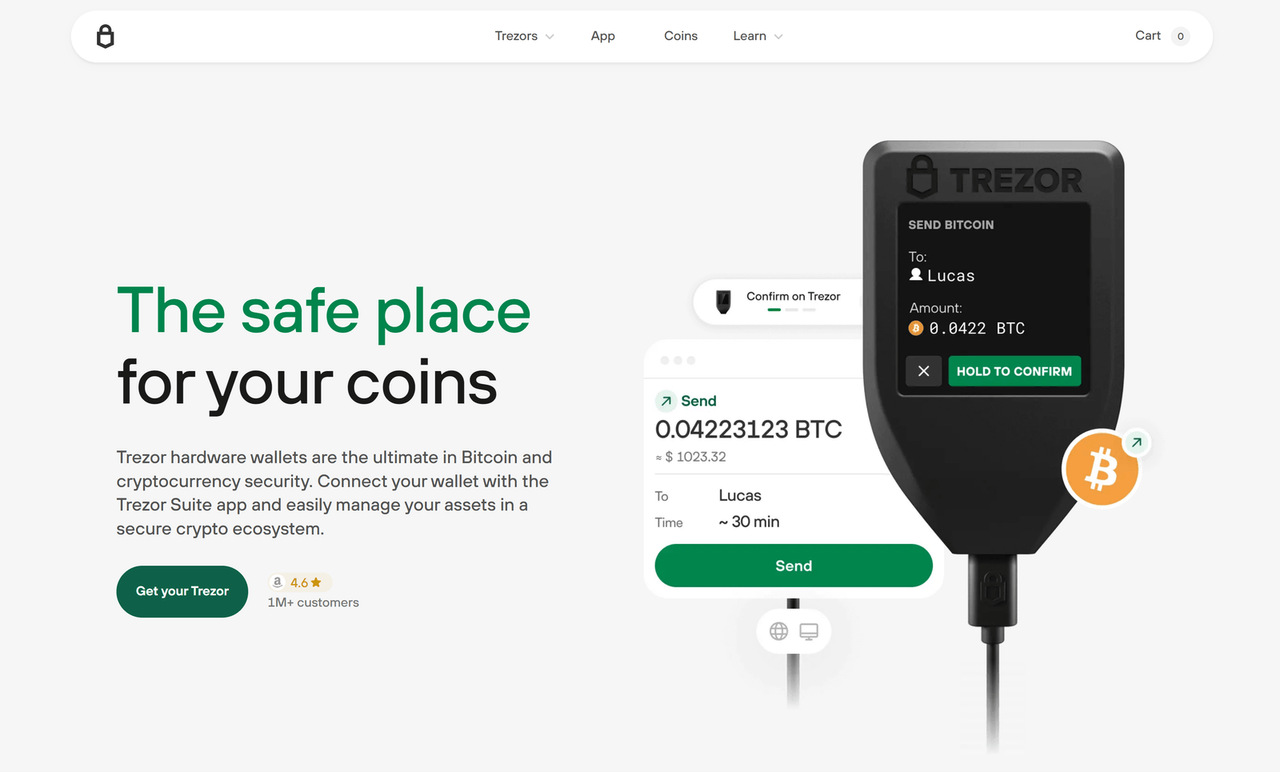How Trezor Suite Protects Your Metadata
Understanding how Trezor Suite protects your metadata is a crucial step in evaluating the privacy and security of your crypto setup. While most users know Trezor protects their private keys through its hardware, many overlook how their metadata — like transaction history, account usage, or IP addresses — can expose them to privacy risks. Thankfully, how Trezor Suite protects your metadata is as thoughtfully designed as its cryptographic security.
Why You Should Care About How Trezor Suite Protects Your Metadata
When examining how Trezor Suite protects your metadata, it's important to first understand why metadata matters. Even if your funds are secure, metadata can reveal patterns about your usage — when and how often you use your wallet, what coins you hold, and even your physical location. That’s why learning how Trezor Suite protects your metadata is key to safeguarding your identity and privacy in the decentralized world.
The Basics of How Trezor Suite Protects Your Metadata
At a fundamental level, how Trezor Suite protects your metadata starts with keeping your device offline and limiting what information is shared with external servers. Trezor Suite is open-source and built with privacy in mind. When using Trezor Suite, no personal information is stored on the app or sent to SatoshiLabs' servers. This decentralized approach is central to how Trezor Suite protects your metadata from external tracking.
How Trezor Suite Protects Your Metadata Using Tor Support
One of the most effective tools in how Trezor Suite protects your metadata is its built-in Tor integration. Tor (The Onion Router) masks your IP address by routing your connection through multiple relays. By enabling Tor within the app settings, you can ensure that even your network metadata remains anonymous. This feature is a key part of how Trezor Suite protects your metadata from being tied to your identity or location.
How Trezor Suite Protects Your Metadata with Anonymous Backends
Another critical component of how Trezor Suite protects your metadata is the way it queries blockchain data. Instead of connecting directly to public explorers that may log your IP and wallet addresses, Trezor Suite uses its own backend infrastructure (via Blockbook) which is designed to avoid data retention. This reduces the risk of third-party metadata leaks — one of the clearest ways how Trezor Suite protects your metadata.
Custom Metadata Storage: How Trezor Suite Protects Your Metadata Securely
When using account labeling or notes within your wallet, understanding how Trezor Suite protects your metadata becomes even more essential. Trezor Suite allows you to use cloud backups like Dropbox or Google Drive to store encrypted metadata. The encryption key is derived from your device and passphrase, so only you can decrypt it. This demonstrates how Trezor Suite protects your metadata even when it's stored on third-party cloud platforms.
User-Controlled Encryption: A Key to How Trezor Suite Protects Your Metadata
Encryption is the backbone of how Trezor Suite protects your metadata. When you label accounts or use metadata features, the data is always encrypted on your side — never stored in plain text. The encryption keys never leave your device, and Trezor Suite never sees your metadata. This client-side approach is essential to how Trezor Suite protects your metadata from surveillance or data breaches.
Top 7 Ways How Trezor Suite Protects Your Metadata
To summarize the major strategies, here are the top 7 ways how Trezor Suite protects your metadata:
- Tor Integration: Hides your IP address from servers and explorers — core to how Trezor Suite protects your metadata.
- Open-source transparency: Allows users to audit how Trezor Suite protects your metadata without needing to trust a black-box.
- Anonymous backend (Blockbook): Avoids connecting to third-party nodes that log requests — a major feature in how Trezor Suite protects your metadata.
- Client-side encryption: Keeps account labels and notes secure by encrypting locally — another layer in how Trezor Suite protects your metadata.
- Optional cloud sync: Metadata can be backed up encrypted on cloud drives — still secure thanks to how Trezor Suite protects your metadata with private keys.
- No telemetry or data harvesting: Unlike many apps, how Trezor Suite protects your metadata includes not tracking your usage or preferences.
- Passphrase feature: Provides hidden wallets that are not visible to anyone — a stealthy method for how Trezor Suite protects your metadata and funds.
How Trezor Suite Protects Your Metadata Versus Other Wallets
When comparing how Trezor Suite protects your metadata to competitors like Ledger Live or MetaMask, the privacy focus stands out. Most wallets do not offer built-in Tor routing, encrypted metadata storage, or independent backends. In contrast, how Trezor Suite protects your metadata is embedded into every layer — from device communication to cloud integration, always prioritizing user privacy and sovereignty.
Advanced Privacy Tools: How Trezor Suite Protects Your Metadata Beyond Basics
For advanced users, how Trezor Suite protects your metadata extends even further. You can pair it with a VPN, custom backend nodes, or even run Trezor Suite from a secure Linux live OS. These enhancements make how Trezor Suite protects your metadata even more resilient to surveillance or digital fingerprinting — ideal for privacy-conscious users.
Final Thoughts: How Trezor Suite Protects Your Metadata
In conclusion, how Trezor Suite protects your metadata is not just a feature — it's a philosophy. From Tor integration to encrypted metadata backups, the system is designed to give users full control without compromising security. As the crypto landscape evolves, tools like Trezor Suite are proving that strong privacy and usability can go hand-in-hand. For anyone serious about protecting their identity and digital footprint, understanding how Trezor Suite protects your metadata is absolutely essential.
